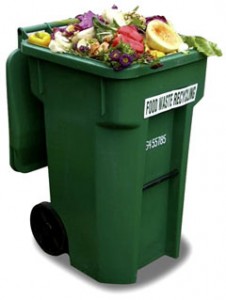Ideas present themselves when you least expect them. Just recently I was reading the Los Angeles Times and came across an article entitled, “Europe’s little fridges hold secret to less waste.”
It was a eureka moment.
Having lived in Europe myself for a short time 30 years ago, I remember my own tiny fridge in the seventh-floor walk up I rented. It forced me to shop more often because it held much less. But each meal was fresher and I wasted much less food. I also produced much less trash overall.
This everyday appliance is a perfect illustration of what can go wrong with a creative brief. It’s also the ideal comparison between the European model of a brief and the American.
The creative brief is an invention of the British, who would not like being called Europeans I know. Apologies, but you get my point. Brits, too, are known for smaller fridges.
 Americans, on the other hand, tend to purchase larger fridges and pack them with a week’s worth of groceries. We also tend to waste more food and produce more trash.
Americans, on the other hand, tend to purchase larger fridges and pack them with a week’s worth of groceries. We also tend to waste more food and produce more trash.
Ditto, I’m afraid, with the American version of the creative brief: Too much information, much of it wasted and unnecessary. It can end up looking like a double-door refrigerator monstrosity.
The lesson here is to remember that the brief is designed to not only inspire the creative team, but primarily to provide strategic reduction.
It is about getting to the heart of the matter.
The tendency, especially among inexperienced brief writers, is to include everything. Leave nothing out. This bad habit is born from the fear that the writer might forget a valuable tidbit that could lead to a winning idea.
It’s the wrong way to think. It’s also laziness.
Your job as a brief writer (including the creative who helps you write the creative brief) is to take the time you need to eliminate the waste and the unnecessary and the irrelevant. To weed out the superfluous and discover the hidden treasure that is the essence of an inspired creative brief. 
So here are three tests to administer to your next creative brief. Fail any one, and especially more than one, and you must consider revisions.
1. How many communication objectives have you listed?
If the answer is four or more, edit. Ideally, aim for three, and make sure that one of the objectives is always “Reinforce the brand.” That leaves two objectives, one of which will be the first among equals. Another name for this? The Single-Minded Proposition. One of your objectives must be the SMP. You will find the SMP nowhere else.
2. Be absolutely certain your SMP is truly Single-Minded.
Clients understandably want to say everything wonderful about their product or service. That’s why they hire ad agencies. The agency’s job is to talk them out of this nonsense. People who buy stuff (you and me and everyone else) are emotional creatures. We respond best to focused messages.
The analogy I like to use is this: You’ve heard about people who can fall asleep on a bed of nails. Too many points and they can’t truly hurt you. But have you ever considered sleeping on a bed with one sharp nail sticking out of it? No. You’d be crazy.
A well-written Single-Minded Proposition should resemble the bed with a single nail. You wouldn’t want to sleep on it, but you’d never miss the point (pun intended).
3. Find a consumer insight.
However you arrive at this consumer insight, you must have one. More than one if possible. But even just one can lead to a creative brief that inspires the creative team to find a big idea.
The consumer insight combined with a killer SMP is the heart of your inspired creative brief. There’s more to it, of course, but these two items are the infrastructure off of which you hang other pieces of information. Don’t bury these ingredients among useless information.
This means work. It is hard work. It is writing that springs from intense and creative thinking. It requires practice. Lots and lots of practice.
As I say to my college composition students, writing is not a formula. It is an art. It is a process that must be honed. It requires editing and revising. And it requires criticism and feedback.
Even though a well-written creative brief is the “first ad,” as John Hegarty calls it, it must never be a first draft.

